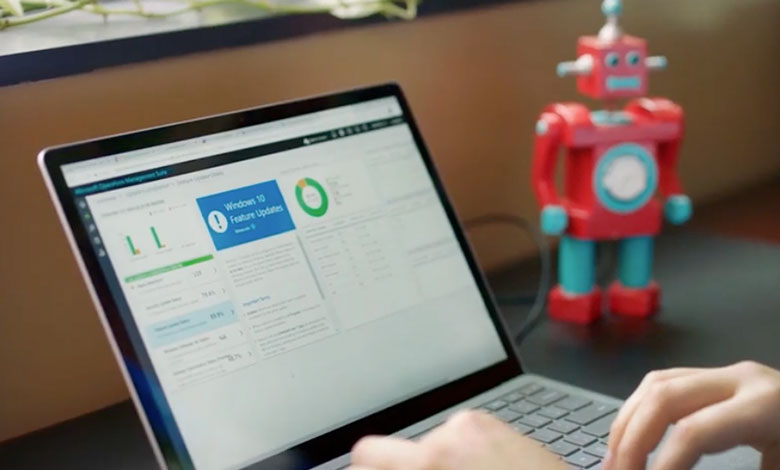I remember how excited I was when Microsoft announced a preview of Windows Virtual Desktop in 2019. Well, at the time it was called Windows Virtual Desktop. Recently Microsoft changed the name to Azure Virtual Desktop (AVD), which paves the way for the new Windows 365 Cloud PC. When I saw the first demos of AVD, I thought virtual desktop as a service (DaaS) would be the next big thing. With Windows 365 now part of the mix, I can confidently say cloud/virtual DaaS will be.
I followed the AVD space. I read reports that there was a steady three-digit adoption growth for AVD. Then I saw a massive spike in demand for AVD in March and April of this year. Our Microsoft team at Connection has been getting many customer inquiries about AVD since the transition to remote and hybrid began in March 2020. It’s clear that the work-from-home transitions drove increased interest in AVD. But what are the benefits of this service? Let’s examine the case for Azure Virtual Desktop during pandemic times and beyond.
Why Choose AVD for DaaS?
As a DaaS offering, AVD is highly cost-effective compared to scaling up a traditional virtual desktop environment in your own data center. With the business disruption during COVID-19, companies were trying to find ways to extend their remote work infrastructure while keeping their operating expenses low. Companies already on a Microsoft ecosystem, such as Windows 10 Enterprise or Microsoft 365, had additional incentives to make the shift; I will explain why further down.
Another driver for AVD during this time is that it lets organizations control apps and data while allowing their employees to access those resources from their own devices. This is something that a traditional VDI/RDS environment can also provide. However, the cost advantage of AVD, when combined with security and control, creates a winning combination.
If IT decision-makers consider the end-user benefit, another reason to choose AVD is the superior experience of Windows 10 and Office 365 that it can provide. The right user experience increases productivity. You don’t want to frustrate your valuable employees with a clunky experience while they work from home. Now, let’s explore what makes AVD a robust offering that could have sustainable growth even after more employees return to the office.
The Azure Advantage
With AVD, the infrastructure and management components of a traditional on-premises virtual desktop infrastructure (VDI) disappear into the cloud—just like a dinosaur-shaped cloud merges back into indescribable formations on the backdrop of the beautiful blue sky on a sunny day. (Read my post on Windows Server/SQL Server end life for more dinosaur metaphors.) Thanks to this merging, Microsoft is taking back critical components of a traditional VDI—such as brokering, load-balancing, compute, storage, and diagnostics—from your plate, which will let your precious IT talent focus on other strategic areas with growth potential.
Hosting your desktops on Azure also means you get Azure’s state-of-the-art security features. I believe Azure is considered the most secure public cloud platform, and AVD provides the best DaaS security model for customers. With AVD, users can only access their virtual machines (VMs) by going through the Azure Active Directory authentication system. This means companies can use multifactor authentication and conditional access according to their needs and depending on the employee profile. Also, Azure uses reverse connect technology that lets you run a VM without keeping any inbound ports open. This means that the VMs on AVD are not exposed to the Internet directly.
Windows 10 Multisession
Unlike the traditional RDI, Azure Virtual Desktop allows multiple sessions on a Windows 10 VM. This means that an organization can have multiple users access the same virtual machine while reducing the cost of maintaining multiple VM licenses. Also, these sessions are isolated from each other, which gives higher security and privacy.
FSLogix Profile Containers
The FSLogix piece solidifies my above point about the superior Windows 10 and Office experience on AVD. Microsoft acquired FSLogix a few years back and integrated its profile container technology into its Azure and Microsoft 365 ecosystems. With FSLogix profile container technology integrated to AVD, Microsoft has revolutionized the way the end-user experience works in non-persistent virtual machine sessions. An AVD user profile will follow a user even if they do not use the same virtual machine session every time they access AVD virtual machines.
The integration of FSLogix containers also significantly impacts how your Microsoft Apps (formerly Office 365 ProPlus) and OneDrive experience work with AVD. FSLogix with AVD can provide you the most productive Microsoft 365 Apps experience. The FSLogix technology on AVD also allows OneDrive to sync when the user roams through non-persistent sessions.
Access AVD from Any Operating System
Another reason why AVD is a win for the end user is through the flexibility that Microsoft offers for AVD across diverse operating systems. A user can access AVD in Windows, macOS, iOS, or Android. The client OS flexibility of this sort goes a long way to BYOD scenarios that companies may want to use while they extend their remote work footprint.
The growth drivers for Microsoft products are not just based on better technology; they include how Microsoft makes it easier for existing customers to adopt those technologies and how they use their partner ecosystem to help customers solve business problems using those technologies. In AVD, Microsoft makes the adoption easier for you by making the AVD license free with most Microsoft 365 licenses and Windows 10 Enterprise licenses. The cost savings alone can be a significant driver for companies—with a Microsoft software ecosystem—to adopt AVD. Not to mention, Windows 7 EOL customers get free Extended Security Updates on AVD.
As a Microsoft Gold partner with a services practice and expertise in Azure, Connection can help your organization adopt Azure Virtual Desktop. As an Azure Managed Service Provider, we can also supervise your Azure environment for you. Reach out anytime to one of our Account Managers with questions about desktop virtualization.

